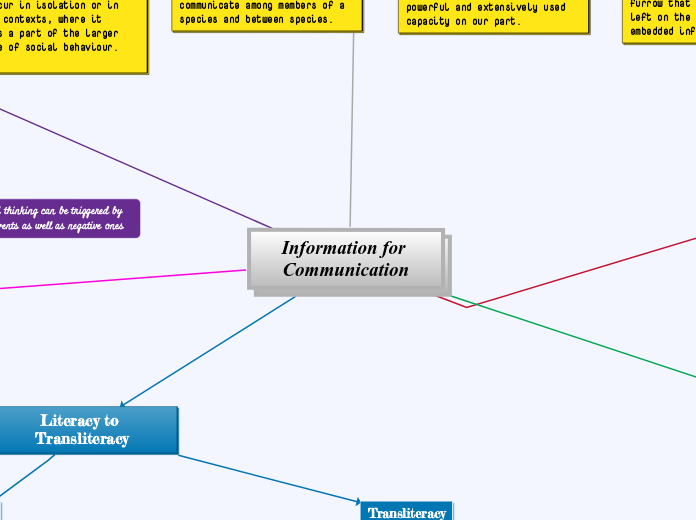によって Siphe Manana 3年前.
201
Information for Communication
Transliteracy encompasses the ability to read, write, and interact across various platforms and media, from traditional forms like handwriting and orality to digital social networks.

によって Siphe Manana 3年前.
201

もっと見る
advises or tells the reader about something. These could include: • A newspaper article giving information, eg about healthy eating or environmental issues. • A website giving information, eg details of local clubs and societies. • A handout from school, eg information about exam timetables or school trips.
A discursive text presents and discusses issues and opinions. The purpose may be to convince or persuade someone that a particular course of action is important or necessary, or simply to present all sides of an argument.
Having reference (to something); belonging to, or of the nature of, (a) reference; containing a reference or references, etc.
acquiring a knowledge of selected works of literature and historical information necessary for informed participation in the political and cultural life of the nation
the technical mastery of particular skills necessary to decode simple texts such as street signs, instruction manuals, or the front page of the newspaper
the ability to decode the ideological dimensions of texts, institutions, social practices and cultural forms such as television and film in order to reveal their selective interests
Our challenge is to harness the potential of information and communication technology to promote the development goals of the Millennium Declaration, namely ⚫ the eradication of extreme poverty and hunger; ⚫ achievement of universal primary education; ⚫ promotion of gender equality and empowerment of women; ⚫ reduction of child mortality; ⚫ improvement of maternal health;
Children ⚫ Teenagers ⚫ Young Adults ⚫ Adults ⚫ Middle Aged ⚫ Elderly ⚫ Urban ⚫ Rural ⚫ Literate ⚫ Illiterate ⚫ Rich ⚫ Poor
Internet Television Telephone Mobile Fixed line Radio Computer networks (Wired or wireless) Satellite communication…
Types of Social Media
⚫ Social network sites ⚫ Media sharing sites ⚫ Social bookmarking sites ⚫ Instant messaging applications
Embedded information is not limited to earlier cultures, however. Quite the contrary, the impact, in embedded information, of the current human cultures on the planet is beyond measure. Every building, every object, every ploughed furrow that human beings have left on the planet is a kind of embedded information
Recorded information is communicatory or memorial information preserved in a durable medium. The use of symbols is primary to human beings and constitutes a powerful and extensively used capacity on our part.
embodied neural-cultural information consists of the pattern of organization of communicatory scents, calls, gestures, and ultimately, human spoken language used to communicate among members of a species and between species.
Subactivities, institutions themselves fully exist only when human beings use their knowledge and experience to enact the institutions in real time. Thus, enacted information can occur in isolation or in social contexts, where it becomes a part of the larger texture of social behaviour. topic